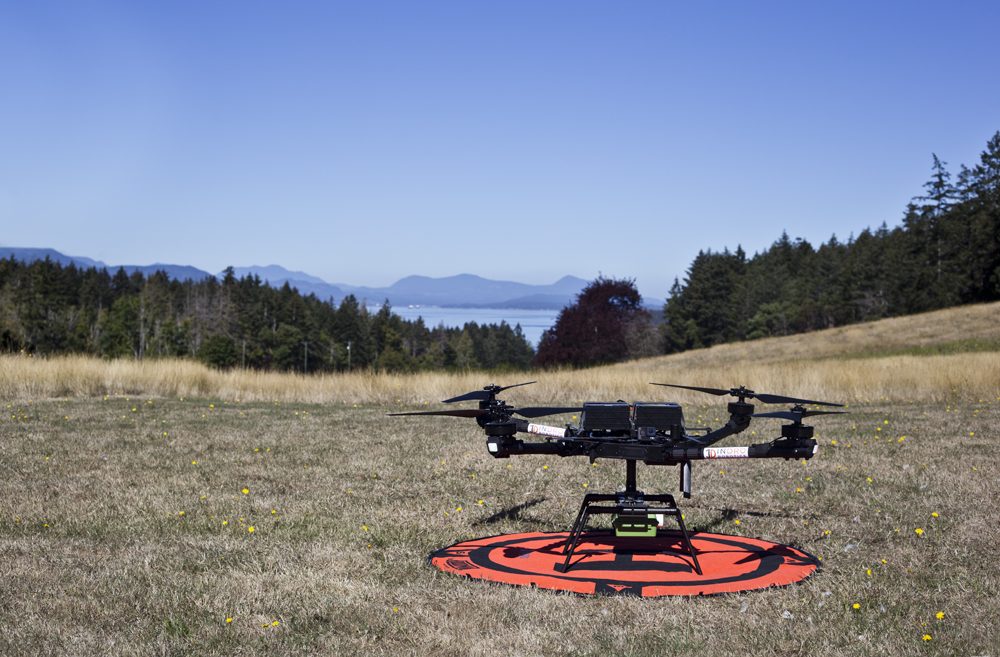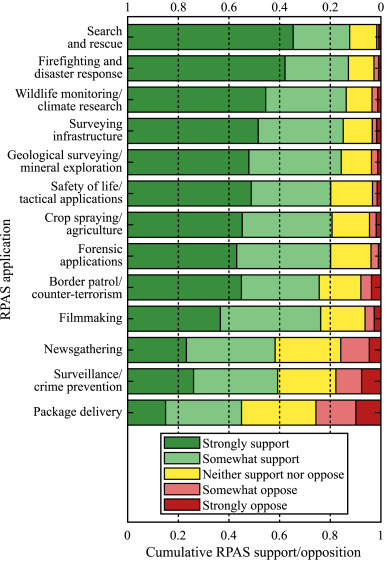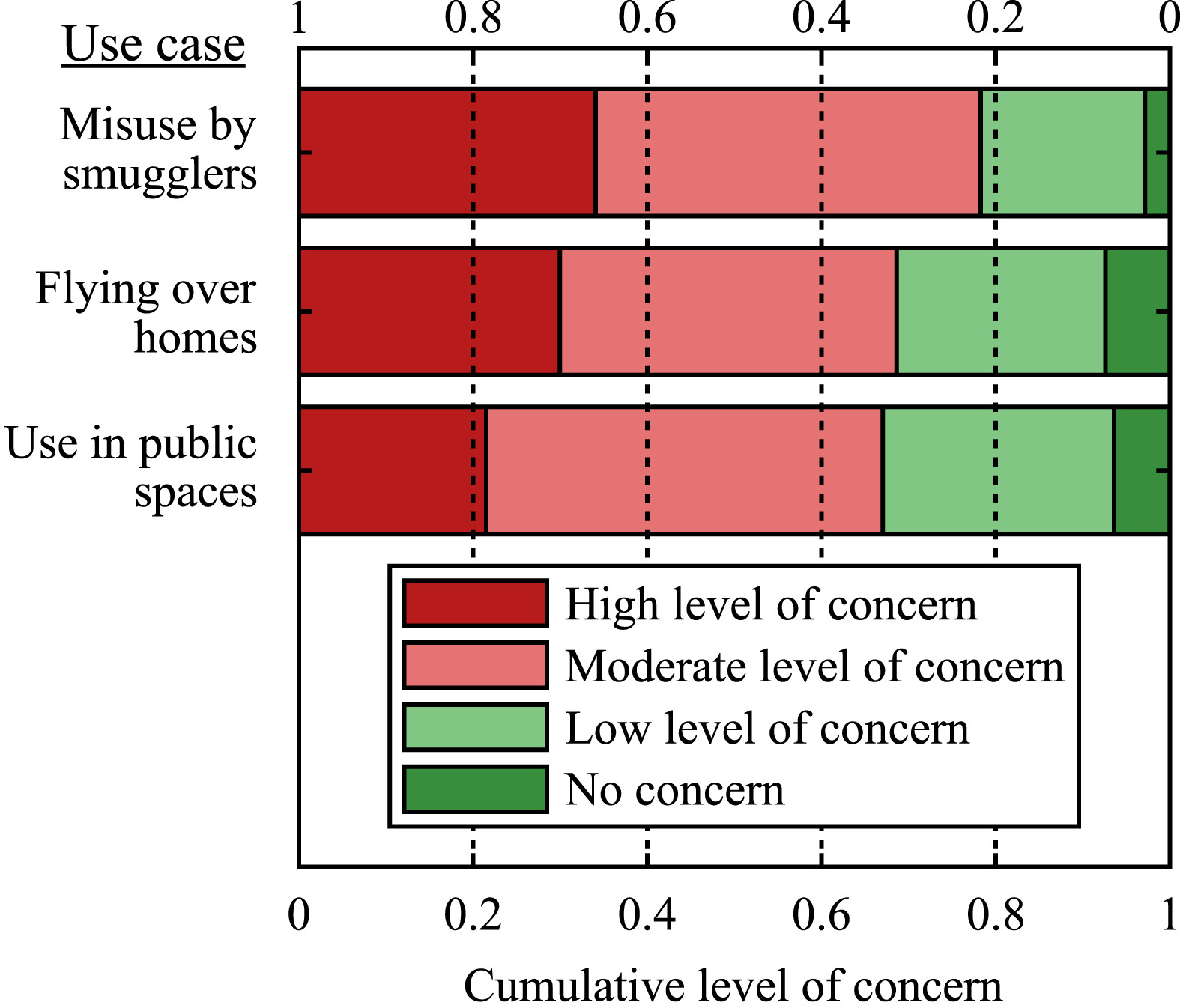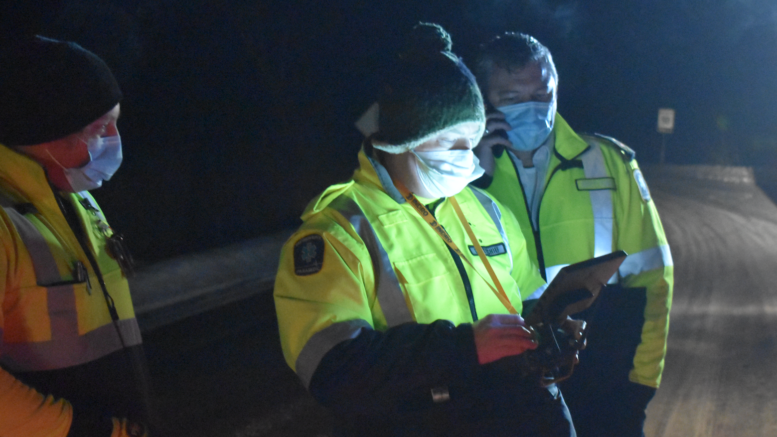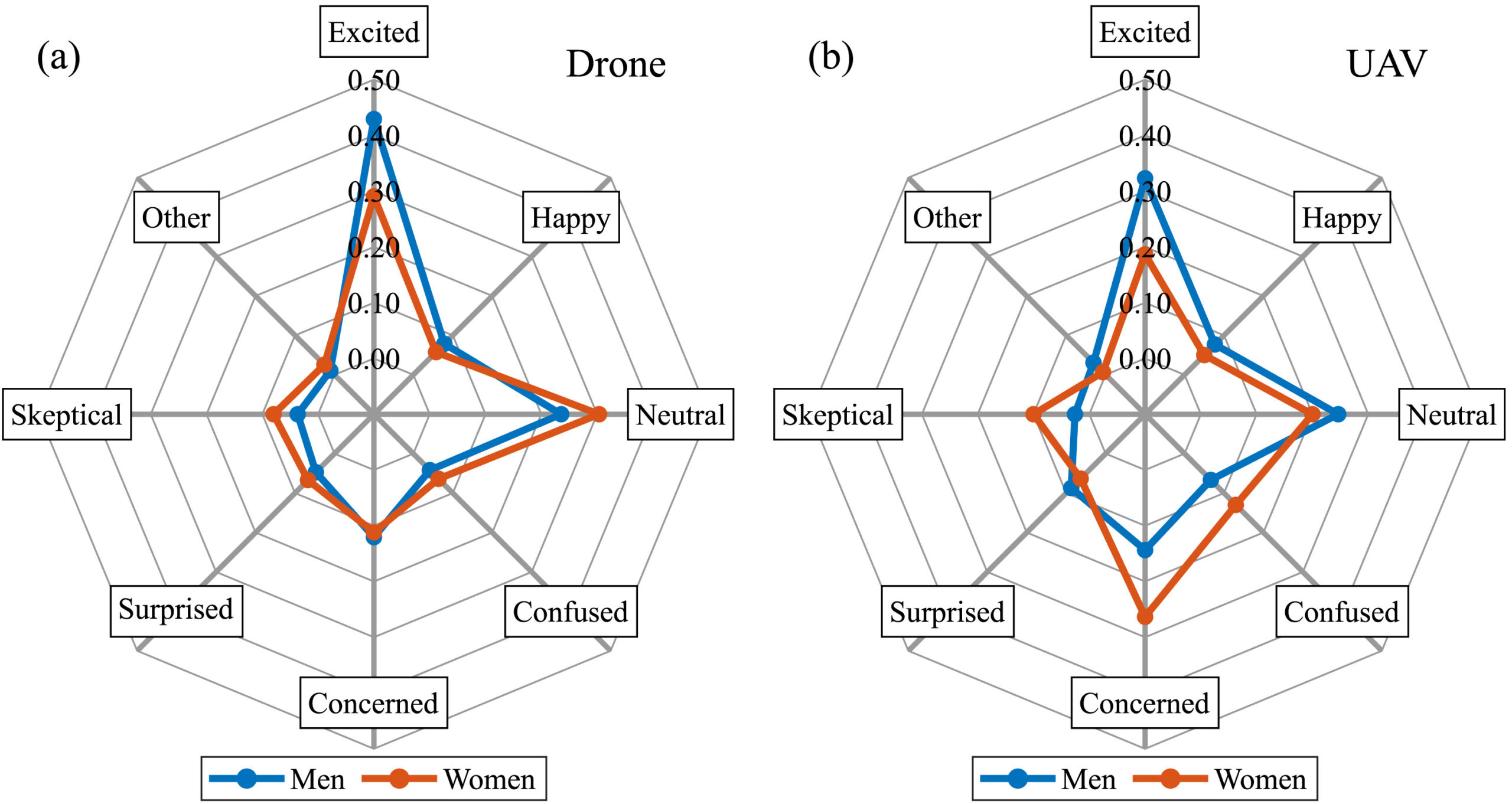By Scott Simmie
What does the public think about drones?
That’s a very good question. And the answer has implications for the industry at large.
Is the public ready to embrace drones becoming a more ubiquitous part of everyday life? Are people ready for drones to be flying overhead in urban settings – whether they’re gathering data, delivering critical supplies, or simply dropping off a bagel and latte for the sake of convenience?
As the industry moves ahead to more routine Beyond Visual Line of Sight Flights utilising pre-programmed and autonomous technologies, the answer – or answers – could have a significant impact on the speed of adoption.
Do people want drones buzzing in their neighbourhoods? WING certainly had some pushback when it began trials of convenience deliveries in Australia. And what about concerns over privacy?
There are plenty of questions. And some intriguing answers.
Below: InDro delivers prescriptions to remote Gulf Island communities in a trial using drones for critical deliveries of medications
CANADIAN RESEARCH
Before we dive into the nuts and bolts, some context: We’ll be referring to two scientific papers just published by Canadian-led research teams based out or Carleton University in Ottawa. One of these papers reviews existing research and draws conclusions, while the other involves original data on public perceptions gathered in Canada. Though we’ll dip into both, we’ll focus primarily on the paper called “Public perception of remotely piloted aircraft systems in Canada” – which appears in the May 2023 issue of Technology In society.
That study was authored by Dr. Nick Tepylo, Leilah Debelle, and Jeremy Laliberté. Dr. Tepylo is both a pilot and an aircraft systems engineer who holds a PhD; Professor Jeremy Laliberté leads a 22-person Carleton research group that focusses on the advanced use of drones and Advanced Air Mobility (AAM). Leilah Debelle is a research assistant (Co-op) in the Department of Psychology.
Together, this group carried out the first original research on this topic in Canada since 2014. Back then, there was considerable opposition to drones. As the paper’s abstract points out:
“The last major survey performed in Canada was done in 2014 and found the public was rather opposed to the use of drones and preferred traditionally piloted aircraft in all 38 applications polled. Much has changed over the past eight years as the findings presented herein show the public is supportive of the technology in most applications… Applications of drones that were perceived to further the public interest such as search and rescue, firefighting, and climate research were also viewed more positively. Most drone user groups were viewed favorably except for journalists and corporations.”
Below: A Draganfly drone designed for medical deliveries
WHAT DO CANADIANS THINK?
Well, in large part, it depends on what use-cases are involved.
The respondents in the survey (there were 1,022), showed a clear preference for use-cases such as Search and Rescue, disaster response and scientific research. At the bottom of the list? Drone delivery.
We spoke with Jeremy Laliberté about the results; he agreed that people surveyed were more inclined to support what could be termed “positive” use-case scenarios.
“In general, the public is accepting of these technologies, but it varies strongly,” says Laliberté.
“If you look at the Canadian context, who is using the RPAS influences heavily the level of acceptance. So for example, public safety applications, Search and Rescue, things that are for the public good…have very high levels of acceptance. And we found in our literature review, that’s also the case in other countries.”
Intuitively, that makes sense. But what are the applications where the public is less likely to embrace drone use?
“Where the acceptance falls off, interestingly enough, is around delivery – delivery of just regular goods and services…packages, parcels, things like that. As well as journalism – using drones to monitor the public in any way or for news gathering – those get lower levels of acceptance,” he says.
You can see the varying levels of acceptance, pending use-cases, in the graphic below from the research paper. About 87 per cent of respondents strongly or somewhat support use-cases like Search and Rescue, firefighting and disaster response. Only 1.6 per cent of respondents oppose the use of drones in these scenarios.
“At the other end of the spectrum, package delivery had the lowest level of support with 44.9% in favor, 25.7% opposed, and 29.4% neither supporting nor opposing this mission type,” states the paper.
“Newsgathering and surveillance missions received just shy of 60 per cent support, while all other missions received at least 75% support. Additionally, only three missions (newsgathering, surveillance, and package delivery) received more than 10% opposition.”
CONCERNS OVER MISUSE
The research also asked about the potential misuse or drones. Three different scenarios were presented to respondents: The use of drones for smuggling, flights over public spaces and flights over residential properties.
“Participants were most concerned about the potential misuse of RPAS by smugglers with 34.1% expressing a high level of concern and an additional 44.2% indicating a moderate level of concern,” states the report.
Reported cases of smuggling usually involve criminals dropping contraband into prison facilities. So while there is concern about such activities, these use-cases are generally rare and don’t directly impact members of the public or legitimate drone service providers. Arguably more relevant to the industry is concerns about flights over public spaces and homes, with the latter something that could become routine if and when urban drone deliveries take place.
PRIVACY
Respondents were given the opportunity to get a little more specific about their concerns, with the option of entering their thoughts in a text box. Of the 1022 people surveyed, 611 (nearly 60 per cent) took the opportunity to offer additional information. And it’s clear: People are concerned about privacy.
“Responses relating to privacy concerns were the most common with 58.3% of responses highlighting some sort of privacy concern. Privacy was the most common word used, followed by variations of the words spy and surveillance,” states the report.
“Other words such as filming, video, pictures, etc. were entered and included under the privacy category. Government users were the most mentioned user of concern, followed by law enforcement, and hobbyists. Other issues raised related to the risk of collisions or drones falling out of the sky, hacking and cybersecurity, misuse by criminals, and the potential for weaponizing drones to target civilians.”
And there’s a lesson here, says Laliberté, for service providers. The public wants to know what these devices are doing when in public spaces or over residences, and what data is being collected.
“Things like package delivery…those are the ones (use-cases) where there will definitely need to be clear and transparent sharing of information: What are you doing? Who’s operating the aircraft? What kind of data is being collected? How’s the data being protected?” he says.
“I think the operators will have to be proactive about that sort of thing and really sort of get out there and explain their operations and be clear and transparent, and explain what they’re doing, how they’re doing it and how they’ve ensured that it’s safe.”
Laliberté suggests it could also be useful for drone operators in such use-cases to clearly mark their drones with company names and/or colors so that the devices can be identified from the ground. That way they’re not seen as an anonymous device with an unknown operator – which could contribute to concern/suspicion.
Below: First Responders operate a drone while trying to locate a missing person
NOT JUST CANADA
It’s not just Canadians who have concerns about privacy. The paper cited three other research papers – two from the United States and one from Switzerland – that showed similar concerns.
“Similar to other democratic countries, the Canadians surveyed in this study expressed privacy concerns regarding the use of RPAS. Most of these concerns were related to surveillance by individuals, news organizations, or the government,” states the paper.
“The major concern with government users and law enforcement is surveillance, while with corporate entities, data collection for marketing is the largest concern, whereas with hobbyists, people are concerned about potential spying and recording of one’s actions. Future policy should be written to address each of these unique scenarios to improve the social acceptance of drones.”
The research also found there are differences in public acceptance based on perceived use of drones. If the drones can be obviously seen as a tool, their deployment is likely to be seen more favorably when compared with other forms of sensor-based data acquisition.
“The Dutch team of Bart Engberts and Edo Gillissen make the designation between the use of drones for sensory applications and their use as a tool,” explains Dr. Tepylo.
“Applications falling under the tool category such as using drones for firefighting or disaster monitoring typically have higher levels of support; however, the public is more weary when drones are used for sensory applications. These could include crime scene surveillance and even using drones to issue speeding tickets. People are used to a certain level of privacy and when drones are added to the mix, even without knowing how the drones are being used, they feel that their privacy is being taken from them.”
THE GOOD NEWS
It’s worth noting that the Carleton research indicates a shift in public opinion since the last major Canadian survey on the topic in 2014. People are more supportive of drones across all use-cases, with very strong support for First Responder use, disaster response and scientific research.
Also worth noting is that younger people and those with a background in RPAS tend to be more supportive than older Canadians and those who are less familiar with the technology. It also appears that words matter: The study used the word “drone” in half of its surveys and “Unmanned Aerial Vehicle” in the other half. Those surveyed were significantly more likely to support use-cases when the word “drone” was used rather than “Unmanned Aerial Vehicle.”
In fact, users were asked to identify their feelings on spotting a “drone” vs. an “Unmanned Aerial Vehicle” in the sky. People were more excited at the prospect of seeing something identified as a drone than an Unmanned Aerial Vehicle. Women expressed less enthusiasm than men regardless of the word used, and far greater concern than men at seeing an Unmanned Aerial Vehicle.
And why is that? The research revealed that more people are familiar with the term “drone” and could easily identify a quadcopter and associate it with the word. There was more confusion around “Unmanned Aerial Vehicle” – with respondents more likely to associate that term with a military device such as a Global Hawk.
AND THAT OTHER STUDY?
At the outset, we mentioned that there was a second paper which reviewed existing literature around public perceptions. Entitled “Public perception of advanced aviation technologies: A review and roadmap to acceptance,” the paper was published in April of 2023. In addition to Dr. Nick Tepylo and Professor Jeremy Laliberté (who authored the Canadian study), they were joined by Dr. Anna Straubinger from the Leibniz Centre for European Economic Research. In addition to drones, the review paper covers public perceptions of Urban Air Mobility and such technologies as air taxis (where Anna Straubinger has extensive expertise).
Because this is a long-ish post already, we’ll briefly hit some of the takeaways. The following highlights are taken directly from the review paper:
- Interest in public perception of drones has been increasing since 2015
- Awareness of drones is between 93 and 97% in North American and European countries
- Support for drones increases with the level of awareness among the population
- Support for air taxis has steadily increased and sits around 40–60%
- Improving public perception is the key to widespread adoption of the technology
LOCATION, LOCATION, LOCATION
Interestingly, the data shows that public perception can be influenced by where you live. In Switzerland, for example, support for package deliveries was 18 per cent. In Singapore, meanwhile, support was in the low 80s. High rates of public acceptance, says Professor Laliberté, will likely lead to earlier adoption in those countries – including technology such as air taxis.
“Especially with Urban Air Mobility (UAM) some of the initial trials were being done and proposed in countries where definitely the level of acceptance is higher,” he says. And as for Singapore and package deliveries?
“Singapore is relatively small, high density, and fairly urban. So it actually makes sense to try these (use-cases) out in some of these areas.”
Even a single drone service provider, doing work that’s perceived as good, can influence overall acceptance rates – which ultimately impact speed of adoption.
“Despite the lack of research data, Africa is a very promising location for the adoption of drone technology due to the work of Zipline,” says Dr. Tepylo.
“The company operates two medical supply distribution centres in Rwanda which can provide coverage for most of the country. When they see a drone in the sky, many Rwandans think of the potential life-saving mission that vehicle is completing so reactions are very positive. If the Zipline model is able to be replicated in other parts of Africa and rural areas around the world, it has the potential to accelerate the adoption of drones globally.”
Below: Graphic showing public acceptance of various use-cases by country. Locations with higher rates of public acceptance could well adopt these technologies at scale sooner than those with lower acceptance rates
INDRO’S TAKE
We’re pleased to see these new papers – and particularly pleased to see researchers from Carleton University taking a lead in this field. These findings are tremendously useful to operators – and offer some useful takeaways when it comes to being transparent about operations due to the level of concerns around privacy. It’s also clear that public perceptions can play a role in influencing regulators when it comes to the pace of change.
At InDro, we’ve long emphasised what we would term ‘positive’ use-case scenarios. These include specialized products and training for First Responders, trials of prescription medication and COVID test supplies via drone – even the delivery of Automated External Defibrillators. It’s nice to see that these use-cases strongly align with high levels of public acceptance/support.
“It may well be inevitable that packages are delivered in urban settings down the road,” says InDro Robotics CEO Philip Reece. “But that’s still several years away. We see greater importance in delivering critical supplies like medications to cut-off and isolated communities and in developing specialised drones for First Responders and scientific data acquisition. We also believe these are the kinds of use-cases that – at least for the moment – are more likely to be viewed as both useful and safer when it comes to Transport Canada and BVLOS permissions.”
We recommend taking a deeper dive into this excellent research. You’ll find the paper on Canadian perceptions here, and the review paper on broader global data here.

